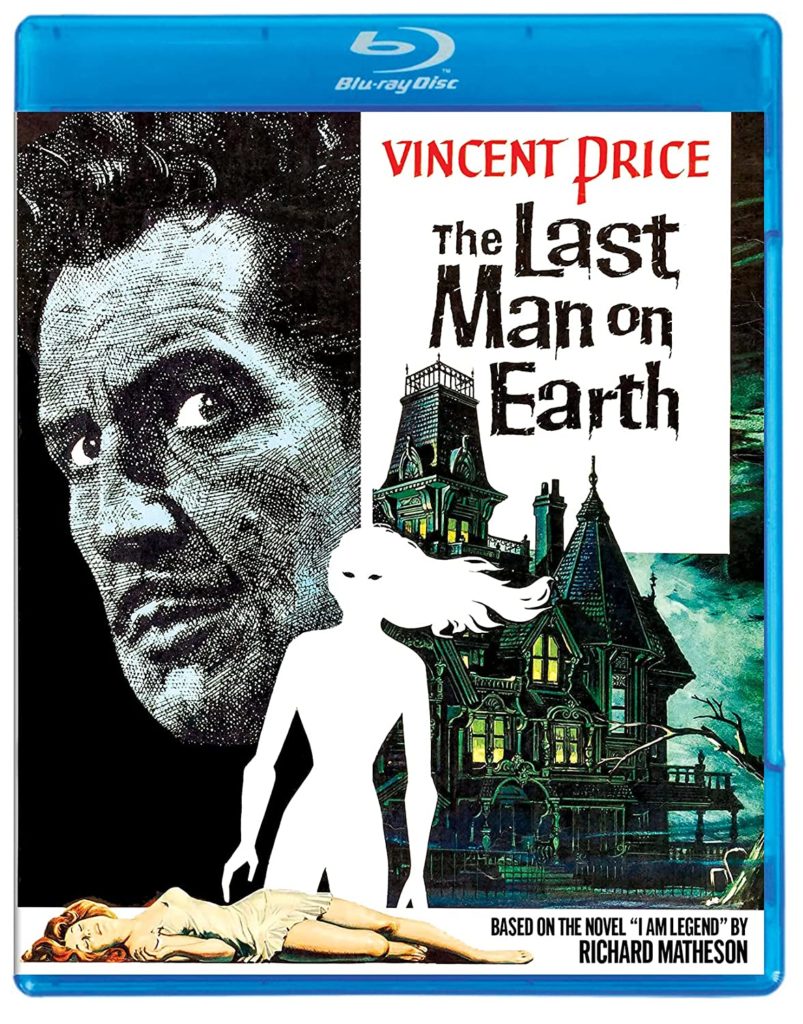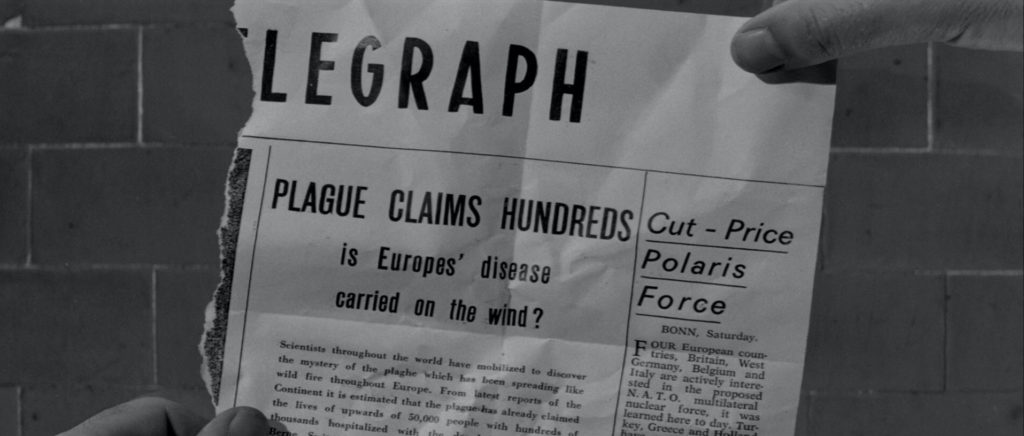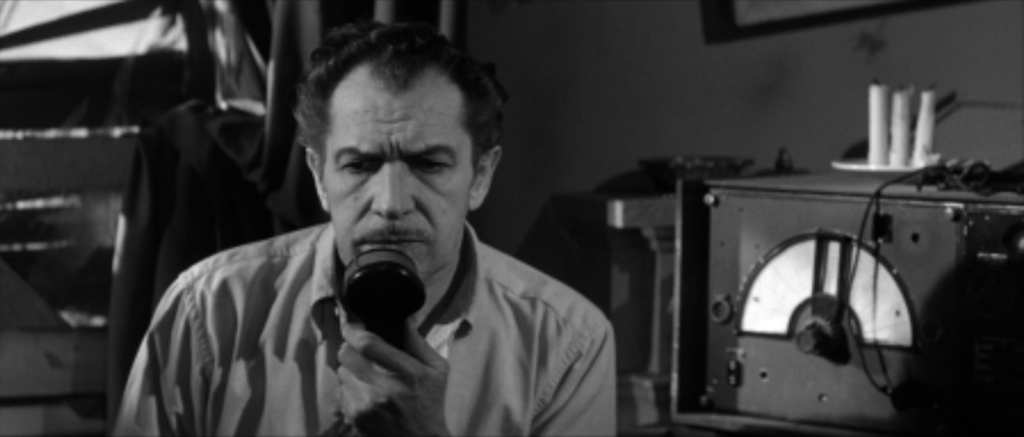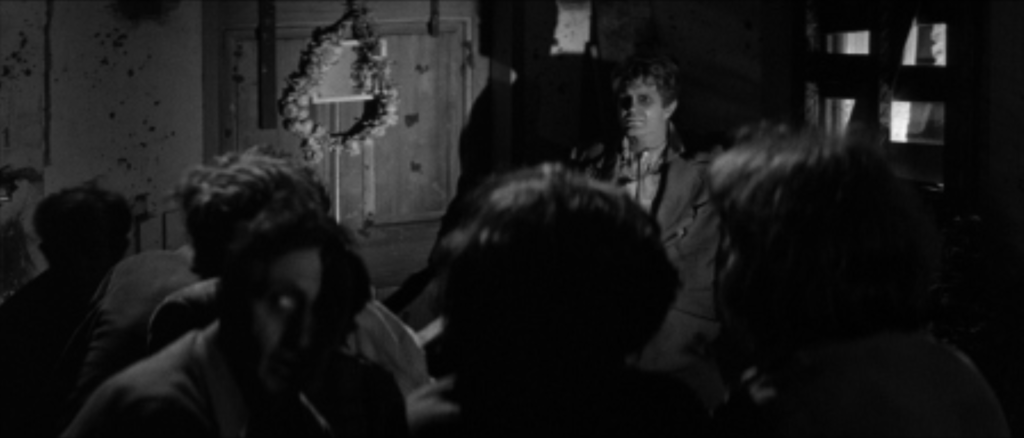Price Is Right For Matheson’s Own Adaptation
DIRECTED BY: SIDNEY SALKOW/1964
STREET DATE: AUGUST 31, 2021/KINO LORBER STUDIO CLASSICS

Sunrise on the empty, dead, silent world of Robert Morgan, played with lanky gravitas by Vincent Price, his expression ever like the college prof reading another tortured student essay, his body weary, slumped intelligently forward, long frame going through the morbid motions of cleaning the city of its fallen citizens. Here he labors in the endless moment, three years after a worldwide plague has killed off most, while the remnant horde of zombie-like infected lurch into the night, cinching a circle inward toward the locus of their desperate need. “They want my blood. It’s their lives or mine,” claims his thousand-yard voiceover. His daily rounds include finding and dispatching the undead with a stake, a post-apocalyptic Van Helsing, then dumping the bodies in a massive, burning pit, lest they rise again to bedevil his mourning: Morgan’s wife and daughter are among the dead, and his self-imposed errands seem a kind of ritualistic reburial of their memory. Watching Price’s gaunt-yet-dapper, mortician-about-town routine feels infused with a missionary fervor in reverse – he’s not there to convert the sick but to send them back to hell, and yet his workaday stakings come at us with the sickly calm of a patrician farmer tending the fields.

We’re meant to be in Anytown, USA, but it’s fitting that the movie was shot in Rome, known even by children the age of Morgan’s dead daughter as much for its collapsed beauty as for bracketing out a new system of civilization from the old, outsmarted one – in this case, the insurmountable mind of man bested by a germ on the wind. Morgan is the only one left, he assumes, who’s uninfected, his blood rendered immune by a bite from a vampire bat years before the plague descended. The language of Morgan’s run-on voiceover has the immediacy of today’s run-on COVID conversation, and we listen with knowing ears at the dialectic in the otherwise standard flashbacks to Morgan’s research lab – essentially “trust the science!” vs. “it’s the end of the world!” Thus, a near-60-year-old movie reaches unwanted levels of newness that infect our passive enjoyment with active reminders of the scourge lingering at our windows.

The film is the first – and many may say the best – adaptation of Richard Matheson’s 1954 novel, I Am Legend, with a few poignant switches, including the relocation of the climax from Morgan’s (in the book, Neville’s) prison cell to a church, where the subtler shades of the hero’s end are transubstantiated into a near-literal sacrifice for all mankind on the altar, complete with spear piercing flesh, fully-splayed arms, and the late-in-the-story love interest cradling his body in an ad-hoc Pietà. And it’s all earned. Matheson’s own co-written script (which he disowned after the fact) marries with Sidney Salkow’s widescreen direction to provide ample canvas for the foundational elements of the story to become elevated, past parable, to a kind of secular, sci-fi/horror gospel: let’s say it’s the purest translation of the original Matheson. And like a good gospel, it reaches before and after for inspiration and influence alike; the previous year saw Alfred Hitchcock’s The Birds, with its final act presenting a seminal template for every “board up the house against the incoming evil” movie that followed, while the key ingredient, the walking undead – actually here a slow-loping horde of grunting and whining vampires – is laid out for any and all zombie movies to gut thereafter. (No review of this film is complete without mention of George Romero’s Night of the Living Dead, made four years later.)

Kino Lorber Studio Classics’ disc is end-of-the-world good, front-loaded as it should be with another great commentary track from the formidably pleasant Richard Harland Smith, who wields his reliable combo of handy history (of the origins, the actors, the filmmakers) and smart and right story analysis, as always with his easy-going literary style that’s catnip for genre lovers: “…All the soldiers in their olive drab, the same soldiers who fought so valiantly for humanity against giant insects and alien invaders in the 1950s, are now reduced to burning our loved ones like cordwood.” Along with Smith’s breakdown of the film, he includes a description of his own personal journey with the film – one that started with mentions in books when he was a kid, and into a long period of waiting for that solitary chance to see it on TV. Meanwhile, the extras fill out with items grave-robbed from a previous release: an alternate ending, a short documentary on Matheson, and a Joe Dante/Trailers From Hell review. All told, it’s an attractive final rest for this bleak examination of loneliness, regret, and mourning.
All images courtesy of DVDBeaver.com.

